Security stack optimization is the process of evaluating and refining the collection of security tools an organization uses. It involves identifying redundancies, ensuring proper integration, and aligning the tools with the organization’s specific security needs. By optimizing the security stack, organizations can achieve superior cybersecurity outcomes, enhance threat detection, reduce operational costs, and improve the overall effectiveness of their security infrastructure.
What Is a Cybersecurity Tool Stack?
A cybersecurity tool stack refers to the set of technologies and software solutions an organization employs to protect its network, data, and systems from cyber threats. These tools can include firewalls, antivirus software, intrusion detection systems (IDS), encryption tools, and threat intelligence platforms, among others. The goal of a well-designed security stack is to create a layered defense system that can detect, block, and respond to cyber threats in real time.
While a tool stack can provide robust protection, the tools themselves must work cohesively. Without proper integration and optimization, organizations may face challenges in effectively managing their security tools, leading to gaps in protection or missed threats. This is why security stack optimization is so critical in today’s cybersecurity landscape.
The Importance of Security Stack Optimization
As cyber threats evolve, organizations must adapt their defenses accordingly. A fragmented, outdated, or inefficient security stack can leave an organization vulnerable, even with the best security tools in place. Optimizing the security stack offers several key benefits that can drive superior cybersecurity outcomes.
1. Enhanced Threat Detection
The main goal of any cybersecurity tool is to detect and mitigate potential threats before they can cause damage. However, if security tools are not optimized, they may fail to detect threats quickly or accurately. This can lead to delays in responding to attacks, giving cybercriminals more time to exploit vulnerabilities.
By optimizing the security stack, organizations can improve the visibility and effectiveness of their threat detection mechanisms. Integrated tools can share information in real-time, allowing for faster identification and response. For example, threat intelligence platforms can provide data to intrusion prevention systems (IPS) and firewalls, enabling them to block attacks more effectively.
2. Streamlined Incident Response
When a cyberattack occurs, time is of the essence. The quicker an organization can detect, analyze, and respond to a threat, the less damage it will suffer. Security stack optimization ensures that all the tools in the stack are working in tandem, enabling faster incident detection and response.
For example, an optimized stack can automate certain incident response procedures, such as isolating compromised devices, blocking malicious IP addresses, or alerting security teams to the incident. This reduces the time it takes to respond to an attack and minimizes the impact on the organization.
3. Reduced Operational Costs
Managing a complex security tool stack can be resource-intensive. Organizations may find themselves paying for multiple tools that overlap in functionality, leading to unnecessary expenses. Additionally, a lack of integration between tools can result in duplicated efforts, making the process of monitoring and managing the stack inefficient.

By optimizing the security stack, organizations can eliminate redundant tools, consolidate functionalities, and reduce the overall cost of their cybersecurity operations. This allows businesses to invest more strategically in the tools that offer the most value, rather than spending resources on unnecessary or ineffective solutions.
4. Improved Resource Utilization
Many cybersecurity tools are resource-intensive, requiring significant computing power, storage, and bandwidth. If a tool is not well integrated with others in the stack, it can consume excessive resources, slowing down systems and impacting performance. Security stack optimization can help ensure that resources are used efficiently, improving the overall performance of the organization’s IT infrastructure.
For instance, by consolidating tools with overlapping functions, businesses can free up system resources and reduce the strain on their networks. This results in faster processing times, fewer slowdowns, and an overall more efficient cybersecurity system.
5. Better Compliance and Reporting
For many industries, maintaining regulatory compliance is a critical aspect of cybersecurity. Regulatory frameworks, such as GDPR, HIPAA, and PCI-DSS, require businesses to implement specific security measures to protect sensitive data. An optimized security stack makes it easier to meet these compliance requirements.
Optimized tools often come with built-in reporting features that simplify compliance audits. Integrated tools can also generate comprehensive security reports, making it easier to track and demonstrate compliance to regulators. This helps reduce the risk of penalties and ensures that the organization is adhering to industry standards.
The Challenges of Managing a Complex Security Tool Stack
Managing a diverse array of cybersecurity tools can be a daunting task, especially when each tool serves a different function. Some of the common challenges organizations face when managing their security stack include:
1. Tool Overload
Many organizations find themselves using a wide range of security tools, sometimes more than they actually need. Tool overload can create confusion, increase complexity, and make it difficult to determine which tool is responsible for what. This leads to inefficiencies and potential gaps in coverage.
2. Lack of Integration
In many organizations, security tools operate in silos, meaning they do not communicate with each other effectively. A lack of integration can prevent the tools from sharing critical data, slowing down threat detection and response times. Without seamless integration, organizations risk missing critical security events or failing to act quickly enough to mitigate threats.
3. Difficulty in Prioritizing Threats
When organizations rely on multiple tools, it can be difficult to prioritize which threats to address first. Some tools may alert security teams to a potential issue, but without a centralized system to assess the severity of the threat, the response may be delayed or misdirected. Optimizing the security stack helps provide a more streamlined approach to prioritizing threats and allocating resources effectively.
Ideal Practices for Security Stack Optimization
To achieve the best results from security stack optimization, organizations should follow a strategic approach. Here are some best practices for optimizing your security tool stack:
1. Evaluate Existing Tools
The first step in optimizing your security stack is to conduct a thorough evaluation of the tools you currently use. Assess the effectiveness of each tool, identify any redundancies, and determine whether each tool is still relevant to your security needs. This audit should also consider factors such as performance, ease of integration, and support.
2. Integrate Tools for Better Visibility
Once you have evaluated your existing tools, the next step is to ensure that they work together efficiently. Integration is key to achieving a cohesive security stack. Tools should be able to share data and alerts, allowing security teams to get a comprehensive view of the security landscape. This integration also enables automated responses and faster detection of threats.
3. Consolidate Tools Where Possible
To reduce complexity and costs, consider consolidating tools that perform overlapping functions. For example, many security tools offer a combination of firewall, antivirus, and intrusion detection features.

By consolidating these tools, you can reduce redundancy and simplify management, without sacrificing protection.
4. Leverage Automation
Automation is a powerful tool in security stack optimization. Many routine tasks, such as patch management, vulnerability scanning, and incident response, can be automated to improve efficiency and reduce human error. Automated tools can also provide continuous monitoring, ensuring that threats are detected and addressed immediately.
5. Regularly Evaluate and Update Your Stack
Cybersecurity is an ever-evolving field, and new threats emerge regularly. To ensure that your security stack remains effective, conduct regular reviews and updates. Keep your tools up-to-date with the latest patches, updates, and features to ensure they can handle the latest threats. Regular reviews also allow you to identify new tools that may be necessary as your business grows and your security needs evolve.
Conclusion
In an era of increasing cyber threats, the importance of an effective cybersecurity strategy cannot be overstated. Optimizing your security stack through security stack optimization is one of the most impactful ways to improve your organization’s cybersecurity outcomes. By reducing redundancies, ensuring integration, and streamlining your tools, you can enhance threat detection, reduce costs, and increase the overall effectiveness of your security posture.
Implementing the best practices for security stack optimization is a strategic move that will pay dividends in the long run. It will help you better protect your organization from evolving threats, improve operational efficiency, and ensure that your cybersecurity infrastructure is prepared for whatever challenges lie ahead.
By taking the time to optimize your security stack, you are not only investing in better protection but also positioning your organization for sustained success in a constantly changing digital landscape.



